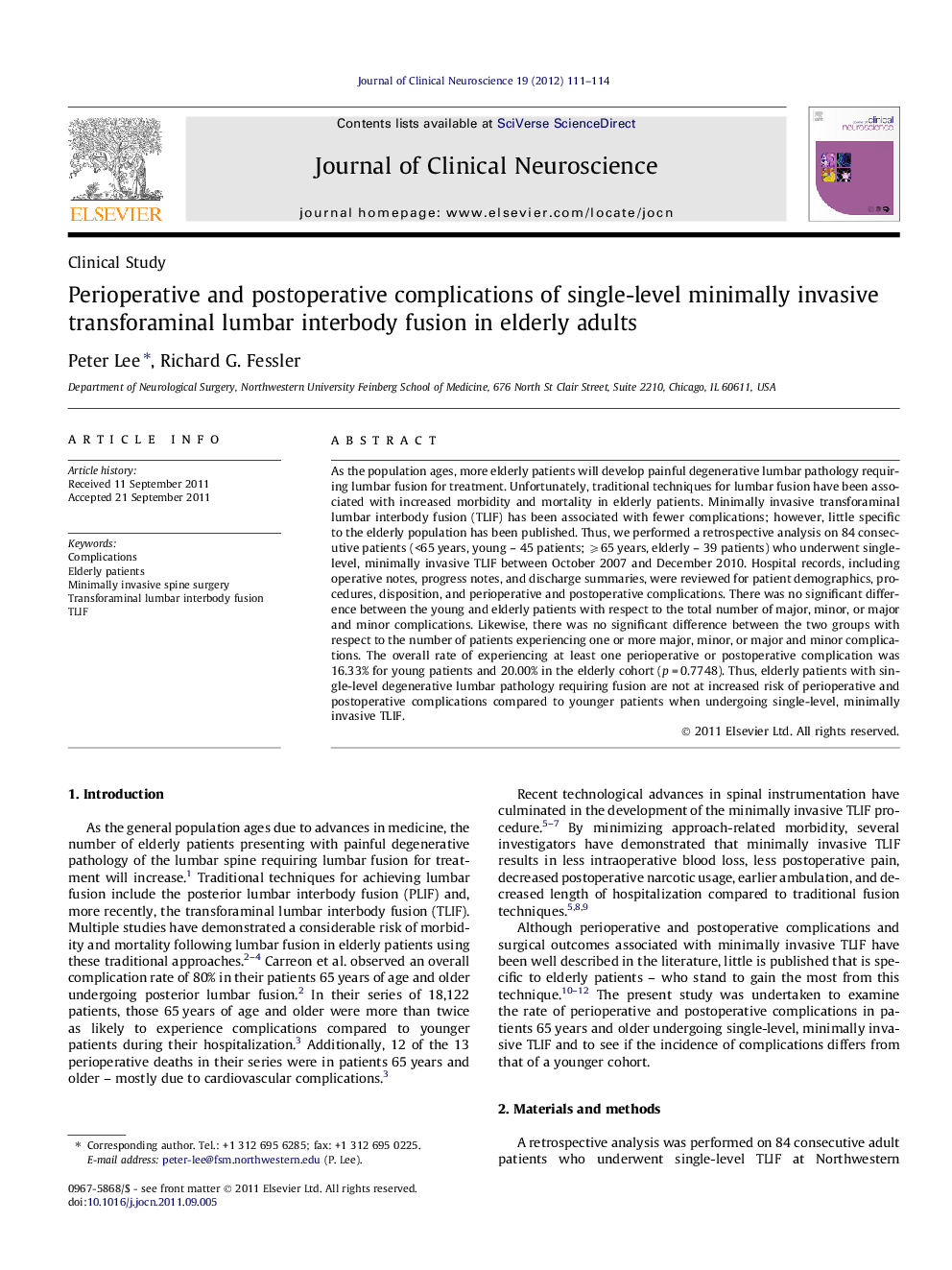| Article ID | Journal | Published Year | Pages | File Type |
|---|---|---|---|---|
| 3060442 | Journal of Clinical Neuroscience | 2012 | 4 Pages |
As the population ages, more elderly patients will develop painful degenerative lumbar pathology requiring lumbar fusion for treatment. Unfortunately, traditional techniques for lumbar fusion have been associated with increased morbidity and mortality in elderly patients. Minimally invasive transforaminal lumbar interbody fusion (TLIF) has been associated with fewer complications; however, little specific to the elderly population has been published. Thus, we performed a retrospective analysis on 84 consecutive patients (<65 years, young – 45 patients; ⩾65 years, elderly – 39 patients) who underwent single-level, minimally invasive TLIF between October 2007 and December 2010. Hospital records, including operative notes, progress notes, and discharge summaries, were reviewed for patient demographics, procedures, disposition, and perioperative and postoperative complications. There was no significant difference between the young and elderly patients with respect to the total number of major, minor, or major and minor complications. Likewise, there was no significant difference between the two groups with respect to the number of patients experiencing one or more major, minor, or major and minor complications. The overall rate of experiencing at least one perioperative or postoperative complication was 16.33% for young patients and 20.00% in the elderly cohort (p = 0.7748). Thus, elderly patients with single-level degenerative lumbar pathology requiring fusion are not at increased risk of perioperative and postoperative complications compared to younger patients when undergoing single-level, minimally invasive TLIF.
